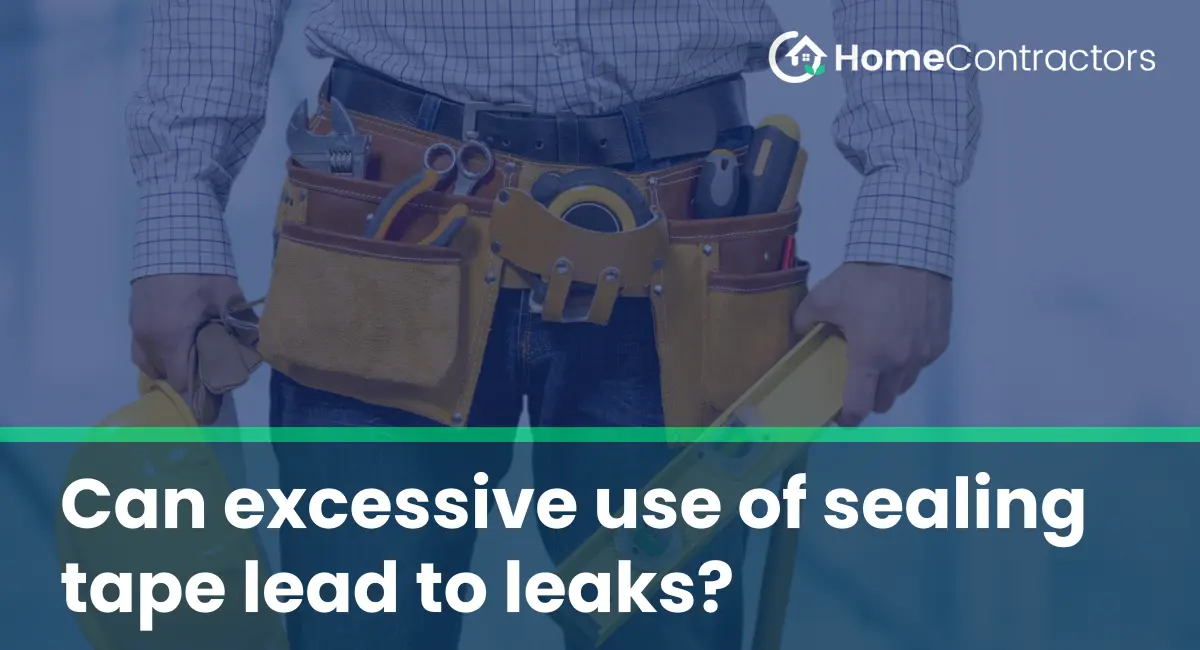In many households and businesses, sealing tape is commonly used to secure packages, patch minor leaks, or even to temporarily fix broken items. While it is a versatile and convenient solution for quick repairs, there is a growing concern about whether excessive use of sealing tape can actually lead to leaks rather than preventing them.
Understanding the purpose of sealing tape
Sealing tape, also known as duct tape or adhesive tape, is made from a thin strip of fabric or plastic coated with an adhesive substance. Its primary purpose is to create a bond between two surfaces, preventing air, water, or other substances from passing through. This versatility and ease of use make it a popular choice for a wide range of applications.
The potential for leaks with excessive use
Despite its effectiveness, excessive use of sealing tape can indeed lead to leaks, contrary to its intended purpose. This occurs when individuals rely too heavily on sealing tape as a long-term solution for leaks or damages that require more substantial repairs. Over time, the adhesive on the tape can deteriorate, resulting in compromised adhesion and increased vulnerability to leaks.
1. Inadequate sealing
One of the primary reasons excessive use of sealing tape can lead to leaks is due to inadequate sealing. While sealing tape can provide a temporary solution for minor leaks, it is not designed to replace more permanent fixes, such as pipe clamps or specialized repair materials. Applying multiple layers of tape may create the illusion of a strong seal, but it may not have sufficient strength to withstand pressure or movement, leading to potential leaks.
2. Degradation of adhesive
Another factor contributing to leaks is the gradual degradation of the adhesive used in sealing tape. Adhesive materials can break down over time, particularly when exposed to moisture, extreme temperatures, or UV radiation. As a result, the bond created by the tape weakens, reducing its ability to create a barrier and effectively seal against leaks.
The importance of proper repair methods
To ensure long-lasting and effective repairs, it is crucial to avoid relying solely on sealing tape for extensive issues that demand more robust solutions. Instead, individuals should prioritize the use of appropriate repair methods and materials to prevent leaks or damages from reoccurring.
1. Identify the root cause
Before attempting any repairs, it is essential to identify the root cause of the leak or damage. Understanding the underlying issue will help determine the appropriate repair approach and materials needed. Proper identification allows for a more targeted and effective repair, minimizing the risk of ongoing leaks and damages.
2. Select appropriate repair materials
Depending on the nature of the problem, selecting the right repair materials is crucial for achieving a successful and long-lasting fix. While sealing tape may be suitable for quick and temporary fixes, it is essential to invest in specialized products designed for specific repair purposes when dealing with leaks or damages that require more robust solutions.
3. Consult professionals when necessary
For complex or significant repairs, it is advisable to consult with professionals who possess the expertise and experience to handle the situation effectively. Professionals can provide comprehensive assessments, recommend appropriate repair methods, and ensure the issue is resolved thoroughly, reducing the potential for leaks or further damage.
Preventing leaks through proactive maintenance
While repairing leaks is crucial, proactive maintenance is equally important in preventing leaks from occurring in the first place. Regular inspections, routine maintenance, and timely repairs of potential vulnerabilities can go a long way in preserving the integrity of structures and systems, minimizing the risk of leaks.
While sealing tape can be a convenient and effective solution for temporary repairs or minor leaks, excessive use can indeed lead to leaks rather than prevent them. Inadequate sealing and the degradation of adhesive over time are some of the key factors contributing to this issue. To ensure long-lasting repairs and minimize the risk of leaks, it is imperative to identify the root cause of the problem, select appropriate repair materials, and seek professional assistance when necessary. Additionally, proactive maintenance practices should be implemented to prevent leaks from occurring in the first place. By taking these steps, individuals can effectively address leaks while preserving the integrity and safety of their structures.
